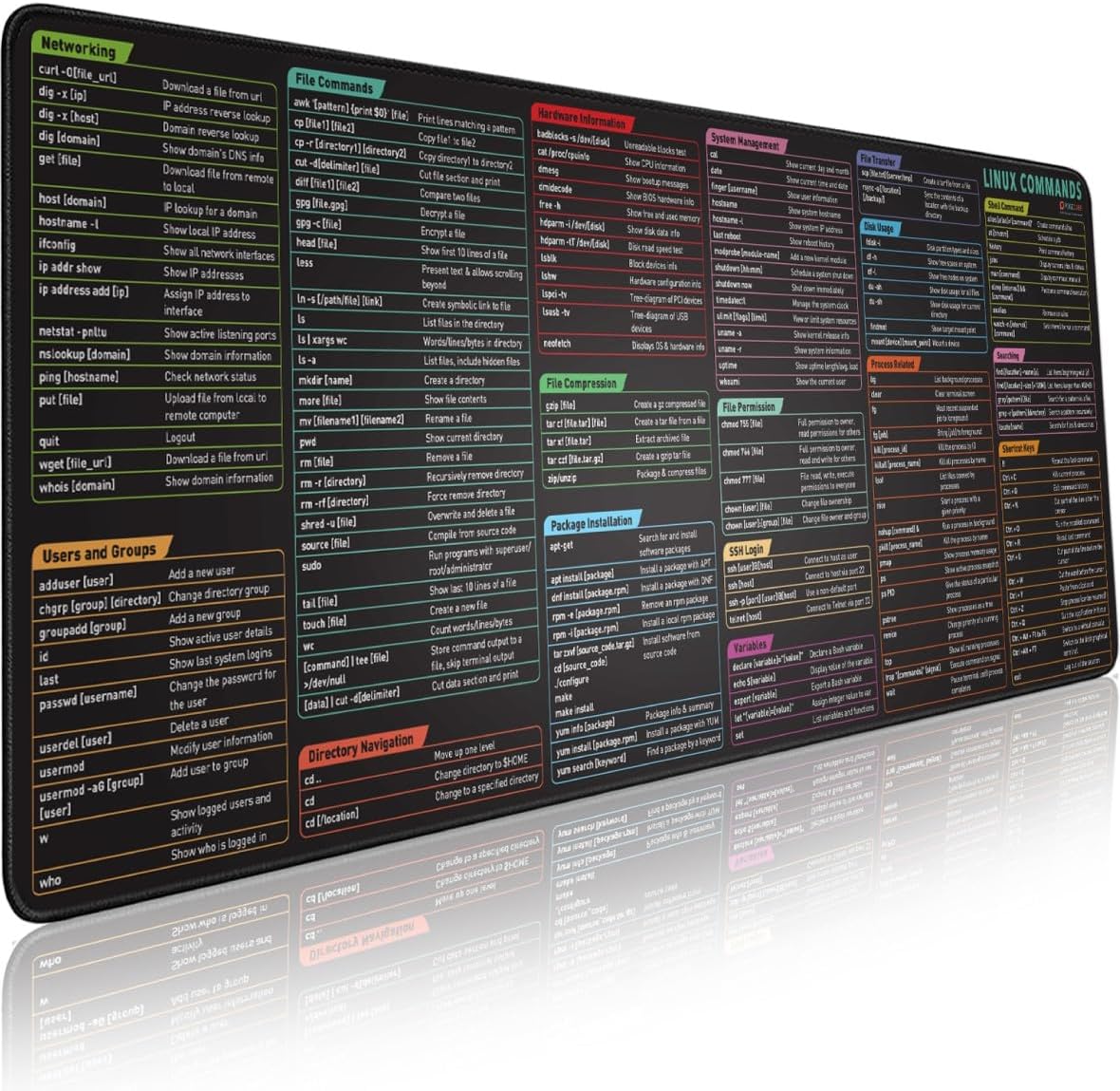Meet Cuckoo Sandbox – Your New Best Friend in Malware Analysis
Unlocking the Power of Cuckoo Sandbox for Effective Malware Analysis

Welcome, BugBusters! Ready to dive into the world of automated malware analysis with a tool that’s as powerful as it is intriguing? Say hello to Cuckoo Sandbox, your new sidekick in the fight against cyber threats. Whether you’re a seasoned cybersecurity pro or just starting your journey, Cuckoo Sandbox is here to make your life easier and your work more effective.
So, what exactly is Cuckoo Sandbox? Picture this: a highly intelligent, open-source automated malware analysis system that lets you run suspicious files in a safe, isolated environment. It’s like having a personal lab where you can observe malware behavior without risk to your systems. Cool, right?
Why Cuckoo Sandbox Matters: Staying ahead of cybercriminals is crucial in the ever-evolving cybersecurity battlefield. Traditional methods of malware analysis can be time-consuming and require significant expertise. Enter Cuckoo Sandbox, a tool that automates the process, saving you time and providing detailed insights into how malware operates. It’s a game-changer for anyone looking to enhance their cybersecurity arsenal.
Core Features:
- Dynamic Analysis: Watch Cuckoo Sandbox execute potentially malicious files and record their behavior in real-time.
- Network Traffic Capture: Analyze how malware interacts with the internet, helping you uncover hidden connections and data exfiltration attempts.
- Memory Dumps: Get deep insights into the malware’s inner workings by examining its memory usage.
- Detailed Reporting: Generate comprehensive reports in various formats (HTML, JSON) to understand the malware’s impact and behavior.
Evolution and Relevance: Since its inception, Cuckoo Sandbox has grown from a simple malware analysis tool to a robust platform used by cybersecurity professionals worldwide. It’s constantly updated to keep pace with the latest threats, making it an indispensable part of modern cybersecurity practices. As cyber threats become more sophisticated, tools like Cuckoo Sandbox are essential for staying one step ahead.
But why is Cuckoo Sandbox especially relevant today? With the rise of advanced persistent threats (APTs) and the increasing sophistication of cyber attacks, having a reliable, automated way to analyze and understand these threats is more important than ever. Cuckoo Sandbox provides reliability and efficiency, making it a go-to tool for anyone serious about cybersecurity.
In this guide, we’ll walk you through everything you need to get started with Cuckoo Sandbox. We’ve got you covered from system requirements and installation steps to basic configuration and running your first analysis. So buckle up, BugBusters! Let’s embark on this exciting journey and unlock the full potential of Cuckoo Sandbox together. It’s time to turn the tables on cyber threats and become the heroes of our digital world.
What is Cuckoo Sandbox?
Definition and Purpose: Cuckoo Sandbox is an open-source automated malware analysis system that gives cybersecurity professionals a powerful tool for investigating suspicious files. Imagine having a virtual lab where you can safely run potentially dangerous software and watch how it behaves. Cuckoo Sandbox provides precisely that—an isolated environment where you can execute files, observe their actions, and understand their impact without putting your actual systems at risk.
Core Features: Let’s dive into what makes Cuckoo Sandbox such a game-changer in malware analysis:
- Dynamic Analysis: This feature lets you see what the malware does in real-time. As the file runs in the sandbox, Cuckoo captures its behavior, including file changes, registry modifications, and more.
- Network Traffic Capture: Malware often communicates with external servers. Cuckoo Sandbox captures this network traffic, allowing you to analyze any data being sent or received. This is crucial for spotting data exfiltration or command-and-control communications.
- Memory Dumps: Have you ever wondered what happens inside a running process? Cuckoo can create memory dumps of the analyzed malware, providing deep insights into its functionality and state at various points during execution.
- Detailed Reporting: After analyzing a file, Cuckoo generates comprehensive reports in multiple formats like HTML and JSON. These reports detail the actions taken by the malware, network connections, system changes, and much more, giving you a clear picture of its behavior and impact.
Historical Context: Cuckoo Sandbox was born out of necessity in 2010, spearheaded by Claudio Guarnieri as a Google Summer of Code project. Over the years, it has evolved significantly, thanks to contributions from the open-source community and continuous updates to keep up with the ever-changing malware landscape. Today, it is one of the most trusted and widely used tools for automated malware analysis, helping cybersecurity experts worldwide stay ahead of threats.
Future Trends: The world of cybersecurity is always evolving, and so is Cuckoo Sandbox. Here’s how it’s adapting to new challenges:
- Increased Sophistication of Malware: Cuckoo is continually updated to handle new evasion techniques and complex behaviors as malware becomes more advanced. This ensures that it remains effective against even the most sophisticated threats.
- Integration with Other Security Tools: Cuckoo Sandbox is increasingly integrating with other cybersecurity tools to provide a more comprehensive defense strategy. This includes SIEM systems, threat intelligence platforms, and incident response tools, creating a more seamless and powerful cybersecurity ecosystem.
Cuckoo Sandbox is not just a tool; it’s a crucial ally in the fight against cyber threats. Providing a safe and controlled environment for malware analysis allows cybersecurity professionals to understand and counteract malicious activities effectively. Cuckoo continues to adapt and grow as we move forward, ensuring it remains a key player in the ongoing battle to secure our digital world.
System Requirements
Hardware Requirements: Before installing, let’s ensure your system is up to the task. Here are the hardware specifications you’ll need:
- Minimum Specifications:
- CPU: Dual-core processor
- RAM: 4 GB
- Storage: 40 GB of free disk space
- Recommended Specifications:
- CPU: Quad-core processor or better
- RAM: 8 GB or more
- Storage: 100 GB of free disk space or more (to accommodate multiple analyses and large malware samples)
Having robust hardware ensures smoother operation and faster analysis times, especially when dealing with large or complex malware samples.
Software Requirements: Now, let’s look at the software side of things. Cuckoo Sandbox relies on specific operating systems and dependencies to function optimally.
- Operating System:
- Host Machine: Linux (Ubuntu 18.04 LTS or newer is recommended)
- Guest VM: Windows (Windows 7, Windows 8.1, Windows 10) – Note that different malware may require different Windows versions for accurate analysis.
- Dependencies:
- Python: Python 2.7 or Python 3.6+
- Virtualization Software: VirtualBox, VMware, or KVM
- Database: MongoDB, SQLite, or MySQL
- Additional Tools: tcpdump, Suricata (for network traffic analysis), and Yara (for signature-based detection)
- Additional Software:
- Cuckoo Dependencies: Various Python libraries and system utilities that will be installed during the setup process.
- Guest Tools: VMware Tools or VirtualBox Guest Additions to enable smooth interaction between the host and guest systems.
Ensuring your system meets these hardware and software requirements is crucial for setting up and running Cuckoo Sandbox effectively. With the right setup, you’ll be able to harness the full power of Cuckoo Sandbox for your malware analysis tasks, making your cybersecurity efforts more robust and efficient.
Installation Instructions
Downloading Cuckoo Sandbox: Let’s start by getting the latest version of Cuckoo Sandbox.
- Visit the Official Website:
- Go to the Cuckoo Sandbox GitHub.
- Download the Repository:
- Clone the repository to your local machine:
git clone https://github.com/cuckoosandbox/cuckoo.gitInstalling Dependencies: Next, we need to install the necessary dependencies. Here’s how to do it for different operating systems:
- Ubuntu (Linux):
- Update and Upgrade:
sudo apt-get update && sudo apt-get upgrade- Install Required Packages:
sudo apt-get install python python-pip python-dev libffi-dev libssl-dev
sudo apt-get install libjpeg-dev zlib1g-dev swig
sudo apt-get install mongodb
sudo apt-get install virtualbox
sudo apt-get install tcpdump
sudo pip install -U pip setuptools
sudo pip install -U cuckoo2. macOS:
- Install Homebrew (if not already installed):
/bin/bash -c "$(curl -fsSL https://raw.githubusercontent.com/Homebrew/install/master/install.sh)"- Install Required Packages:
brew install python
brew install mongodb
brew install virtualbox
brew install tcpdump
sudo pip install -U pip setuptools
sudo pip install -U cuckoo3. Windows:
- Download and Install Python: Ensure Python 2.7 or 3.6+ is installed.
- Install Dependencies Using pip:
pip install -U pip setuptools
pip install -U cuckoo- Install MongoDB: Download and install MongoDB from the official website.
- Install VirtualBox: Download and install VirtualBox from the official website.
Setting Up the Environment: Let’s set up a virtual machine (VM) to run Cuckoo Sandbox effectively.
- Create a Virtual Machine:
- Open VirtualBox (or your preferred virtualization software) and create a new VM.
- Configure VM Settings:
- Name: Choose a name for your VM (e.g., “CuckooSandbox”).
- Type: Select “Microsoft Windows.”
- Version: Choose the appropriate version (e.g., “Windows 7”).
- Memory Size: Allocate at least 2 GB of RAM.
- Hard Disk: Create a virtual hard disk with at least 40 GB of storage.
- Install the Guest Operating System:
- Insert your Windows installation media (ISO file) and follow the installation instructions.
- Once installed, configure Windows to disable Windows Defender and automatic updates to ensure the VM operates smoothly and doesn’t interfere with the analysis.
- Install Guest Additions/VMware Tools:
- For VirtualBox: Install Guest Additions to improve VM performance and enable seamless integration with the host.
- For VMware: Install VMware Tools for similar benefits.
- Network Configuration:
- Configure the network settings to allow the VM to communicate with the host machine while being isolated from the internet to prevent malware from escaping.
- VirtualBox: Go to the VM settings -> Network -> Adapter 1 and select “Host-only Adapter.”
- Prepare the VM for Analysis:
- Install any additional software you might need for malware analysis, such as browsers or document viewers, to test different types of malware.
- Take a snapshot of the VM’s clean state after each analysis to easily revert to a known-good state.
By following these installation instructions, you’ll have Cuckoo Sandbox up and running, ready to tackle your malware analysis needs. With your environment set up correctly, you can safely analyze suspicious files and gain insights into their behavior, strengthening your cybersecurity defenses.
Basic Configuration
Initial Setup: Let’s configure some of the basic settings to get Cuckoo Sandbox ready for action.
- Network Configuration:
- Ensure Proper Network Settings: Ensure your virtual machine (VM) network is set to “Host-only Adapter” to isolate the VM from the internet while allowing communication with the host.
- Edit Cuckoo Configuration: Open the
cuckoo.conffile located in theconfdirectory of your Cuckoo installation. Adjust the network settings to match your environment:
[cuckoo]
resultserver_ip = 192.168.56.1
resultserver_port = 2042- Enable IP Forwarding (Linux only):
sudo sysctl -w net.ipv4.ip_forward=1- Add this line to
/etc/sysctl.confto make it persistent across reboots:
net.ipv4.ip_forward=12. Configure File Paths:
- Modify Paths in
cuckoo.conf: Ensure the paths to various directories are set correctly. For example:
[cuckoo]
machinery = virtualbox
...
[timeouts]
critical = 120Creating Analysis Profiles: Different types of malware require different analysis settings. Let’s set up profiles for various file types.
- Executables:
- Profile Settings: Edit the
analysis.conffile to create a profile for executable files:
- Profile Settings: Edit the
[analysis]
type = exe
timeout = 60- Upload Executables: Use the
submit.pyscript to submit an executable file for analysis:
./utils/submit.py /path/to/malware.exe2. PDFs:
- Profile Settings: Add a section for PDF analysis in
analysis.conf:
[analysis]
type = pdf
timeout = 120- Upload PDFs: Submit a PDF file for analysis:
./utils/submit.py /path/to/document.pdf3. Scripts:
- Profile Settings: Configure a profile for script files:
[analysis]
type = script
timeout = 90- Upload Scripts: Submit a script file for analysis:
./utils/submit.py /path/to/script.pyConfiguring Reporting: Let’s set up the reporting options to generate comprehensive analysis reports.
- Report Formats:
- Configure
reporting.conf: Open thereporting.conffile in theconfdirectory and enable the desired report formats (HTML, JSON, etc.):
- Configure
[reporting]
enabled = yes
format = html, json2. Customization Options:
- HTML Reports: Customize the look and content of HTML reports by modifying the templates in the
reporting/htmldirectory. - JSON Reports: Adjust JSON report settings to include specific data fields you’re interested in.
3. Accessing Reports:
- View Reports: After an analysis is complete, access the reports via the Cuckoo web interface or directly from the
storage/analysesdirectory.
By following these configuration steps, you’ll have Cuckoo Sandbox set up to handle a variety of malware types and generate detailed reports to aid your analysis. This foundational setup ensures you can effectively use Cuckoo Sandbox to analyze suspicious files, uncover their behavior, and bolster your cybersecurity defenses.
Running Your First Analysis
Submitting a Sample: Let’s start by submitting a suspicious file for analysis.
- Prepare Your Sample:
- Make sure your suspicious file (e.g.,
malware.exe) is ready and accessible on your host machine.
- Make sure your suspicious file (e.g.,
- Submit the Sample:
- Use the
submit.pyscript provided by Cuckoo to submit your file for analysis:
- Use the
./utils/submit.py /path/to/malware.exe- You can also submit files via the Cuckoo web interface. Open your browser and navigate to the Cuckoo web interface (usually
http://localhost:8080), click on “Submit,” and upload your file.
Monitoring the Analysis: While Cuckoo Sandbox works its magic, you can monitor the analysis process.
- Check the Status:
- In the Cuckoo web interface, go to the “Tasks” section to see the status of your submitted file. You’ll see whether it’s pending, processing, or completed.
- Access Logs:
- For detailed logs, navigate to the
storage/analysesdirectory on your host machine. Each analysis will have a unique folder containing logs and other relevant files. - Use the
tailcommand to view real-time logs (Linux/macOS):
- For detailed logs, navigate to the
tail -f /path/to/cuckoo/log/cuckoo.logInterpreting Results: Once the analysis is complete, it’s time to dive into the results and see what Cuckoo Sandbox has uncovered.
- View the Report:
- In the Cuckoo web interface, navigate to the “Reports” section and select the completed task. You’ll see various tabs with detailed information about the analysis.
- Alternatively, open the HTML or JSON report files located in the
storage/analysesdirectory.
- Understanding the Report:
- Behavior Analysis:
- Processes: Check the “Processes” tab to see which processes were spawned by the malware and their respective actions.
- File Operations: Review any file operations performed, such as file creation, modification, or deletion.
- Network Analysis:
- Traffic: Look at the “Network” tab to see if the malware attempted to connect to any external IP addresses or domains.
- Traffic Capture: Examine captured network traffic to identify any suspicious communications.
- Static Analysis:
- Signatures: Check the “Signatures” tab for known malware signatures matching the file’s behavior.
- Strings: Review the “Strings” tab for any readable strings within the file that might give clues about its purpose.
- Screenshots: If the malware exhibited visual behavior (e.g., displaying messages or opening windows), you’ll find screenshots in the “Screenshots” tab.
- Behavior Analysis:
- Interpreting Key Findings:
- Indicators of Compromise (IOCs): Identify any IOCs, such as specific IP addresses, file hashes, or domain names, that can be used to recognize the malware in other systems.
- Recommendations: Based on the findings, determine the following steps, such as updating your security policies, blocking malicious IPs, or further investigating related threats.
By following these steps, you’ll successfully perform your first malware analysis with Cuckoo Sandbox. This powerful tool will help you understand the behavior and impact of suspicious files, enabling you to take informed actions to protect your systems. So, roll up your sleeves, BugBusters, and start uncovering the hidden secrets of malware with Cuckoo Sandbox!
Real-World Applications of Cuckoo Sandbox
Cybersecurity Research: Cuckoo Sandbox is a valuable tool for cybersecurity researchers who need to understand the intricacies of malware behavior. Here’s how it plays a pivotal role in research:
- Studying Malware Behavior:
- Dynamic Analysis: Researchers use Cuckoo Sandbox to execute malware samples in a controlled environment, observing their behavior in real time. This helps them identify how malware interacts with the system, what files it modifies, and what network activities it initiates.
- Behavior Patterns: By analyzing multiple samples, researchers can identify common behavior patterns among different types of malware. This information is crucial for developing new detection and mitigation strategies.
- Developing Mitigation Strategies:
- Signature Creation: Insights gained from Cuckoo Sandbox analyses help create malware signatures that can be used in antivirus software to detect and block threats.
- Behavioral Rules: Researchers can develop behavioral rules that security systems use to identify and mitigate threats based on observed activities rather than just file signatures.
Incident Response: Quick and accurate analysis of the malware involved is essential when a security breach occurs. Cuckoo Sandbox is an indispensable tool for incident response teams:
- Analyzing Malware During Breaches:
- Rapid Analysis: Incident response teams can quickly submit suspicious files found during a breach to Cuckoo Sandbox for analysis. This provides immediate insights into the malware’s capabilities and actions.
- Determining Impact: By understanding what the malware does, teams can assess the potential impact on the affected systems, identifying compromised files, stolen data, and altered configurations.
- Formulating Response Plans:
- Containment: Based on the analysis, teams can develop containment strategies to prevent the malware from spreading further within the network.
- Eradication: Detailed reports from Cuckoo Sandbox guide the eradication process, ensuring that all traces of the malware are removed from the affected systems.
Threat Intelligence: Cuckoo Sandbox is a critical component in gathering and leveraging threat intelligence to enhance an organization’s security posture:
- Gathering Threat Intelligence:
- Indicators of Compromise (IOCs): Analysis reports from Cuckoo Sandbox provide valuable IOCs such as IP addresses, domain names, file hashes, and specific behaviors. These IOCs are crucial for identifying and tracking threats across different systems and networks.
- Threat Feeds: Organizations can integrate the findings from Cuckoo Sandbox into their threat intelligence feeds, enriching the data used by their security operations centers (SOCs) and automated defenses.
- Enhancing Security Posture:
- Proactive Defense: Organizations can stay ahead of emerging threats by continuously analyzing new malware samples. This proactive approach allows them to update their security measures before the threats become widespread.
- Training and Awareness: Sharing the insights gained from Cuckoo Sandbox analyses with the broader security team and organization helps raise awareness and improve overall security practices.
Cuckoo Sandbox’s ability to provide detailed and actionable insights into malware behavior makes it an essential tool in various aspects of cybersecurity. From conducting cutting-edge research to responding to incidents and bolstering threat intelligence, Cuckoo Sandbox empowers professionals to understand, mitigate, and prevent cyber threats more effectively. Embrace the power of Cuckoo Sandbox and BugBusters, and enhance your capability to protect and secure the digital world!
Future Trends in Malware Analysis
Advanced Threats: As cyber threats continue to evolve, so must our tools and strategies for combating them. Here’s a look at some emerging trends in malware and how Cuckoo Sandbox is keeping pace:
- Sophisticated Malware:
- Polymorphic and Metamorphic Malware: These types of malware constantly change their code to evade detection. Cuckoo Sandbox is adapting by using more advanced analysis techniques and machine learning algorithms to identify behavior patterns rather than relying solely on static signatures.
- Fileless Malware: This type of malware resides in memory and leaves little to no footprint on the disk. Cuckoo Sandbox’s dynamic analysis capabilities allow it to monitor memory usage and detect suspicious activities that traditional methods might miss.
- AI and Machine Learning:
- AI-Powered Malware: As malware writers begin to use AI to create more resilient and adaptive threats, Cuckoo Sandbox is also leveraging AI and machine learning to enhance its detection and analysis capabilities.
- Predictive Analysis: By analyzing large datasets of malware behavior, Cuckoo Sandbox can use predictive analytics to anticipate and identify new variants of existing threats.
Integration with Other Tools: For a comprehensive defense strategy, it’s crucial to integrate Cuckoo Sandbox with other security tools. Here’s why integration matters:
- SIEM Systems:
- Seamless Data Flow: Integrating Cuckoo Sandbox with Security Information and Event Management (SIEM) systems like Splunk or ArcSight allows for seamless data flow and centralized monitoring. This enhances the ability to correlate data from different sources and respond to threats more efficiently.
- Automated Response: SIEM systems can trigger computerized responses based on the findings from Cuckoo Sandbox, such as isolating infected systems or blocking malicious IP addresses.
- Endpoint Protection Platforms (EPP):
- Enhanced Detection: By feeding the insights from Cuckoo Sandbox into endpoint protection solutions, organizations can improve their ability to detect and mitigate threats at the endpoint level.
- Unified Management: Integration allows for a unified management console where security teams can monitor and respond to threats detected both by Cuckoo Sandbox and endpoint protection tools.
- Threat Intelligence Platforms:
- Enriched Threat Data: Cuckoo Sandbox can contribute valuable data to threat intelligence platforms, enhancing the overall threat landscape view and helping to identify trends and emerging threats.
- Collaborative Defense: Sharing insights from Cuckoo Sandbox analyses with the broader cybersecurity community through threat intelligence platforms fosters a collaborative defense approach.
Continuous Learning: The field of malware analysis is dynamic, and staying current with its developments is crucial. Here’s how to keep your skills sharp:
- Regularly Update Skills:
- Training and Certifications: Participate in cybersecurity training programs and obtain certifications focusing on malware analysis and reverse engineering. Organizations like SANS Institute offer specialized courses that can enhance your knowledge and skills.
- Workshops and Conferences: Attend cybersecurity workshops, webinars, and conferences to learn about the latest tools, techniques, and trends in malware analysis. Events like Black Hat and DEF CON provide valuable insights and networking opportunities.
- Stay Informed:
- Research Papers and Journals: Read the latest research papers and journals on cybersecurity and malware analysis. Websites like IEEE Xplore and ACM Digital Library publish cutting-edge research that can broaden your understanding.
- Online Communities and Forums: Join online communities and forums where cybersecurity professionals discuss recent developments, share knowledge, and collaborate on solving security challenges. Platforms like Reddit’s r/netsec and Stack Exchange’s Information Security community are great places to start.
- Experiment and Practice:
- Hands-On Labs: Engage in hands-on labs and simulations to practice malware analysis in a controlled environment. Platforms like Cybrary and Hack The Box offer interactive labs that help reinforce theoretical knowledge with practical experience.
- Open Source Tools: Explore and experiment with other open-source malware analysis tools alongside Cuckoo Sandbox to expand your toolkit and adaptability.
By understanding and adapting to future trends in malware analysis, integrating tools for a cohesive defense strategy, and committing to continuous learning, you can stay ahead of the curve and effectively combat evolving cyber threats. Cuckoo Sandbox will continue to be an essential part of this journey, helping you uncover malware’s hidden behaviors and protect your digital world. Keep learning, stay vigilant, and let’s make cybersecurity stronger together, BugBusters!
Unleash Your Malware-Busting Superpowers
As we wrap up this guide, let’s reflect on the exciting journey we’ve taken through the world of Cuckoo Sandbox. We’ve explored what makes this tool indispensable for malware analysis, from its core features and setup to its real-world applications and future trends.
Key Points Recap:
- Introduction to Cuckoo Sandbox: We introduced Cuckoo Sandbox as a powerful, open-source automated malware analysis system ideal for both seasoned cybersecurity professionals and beginners.
- What is Cuckoo Sandbox? We discussed its ability to execute suspicious files in an isolated environment, capture dynamic behaviors and network traffic, and provide comprehensive reports.
- System Requirements and Installation: We outlined the necessary hardware and software prerequisites and provided step-by-step installation instructions to get you started.
- Basic Configuration: We walked through the initial setup, creating analysis profiles and configuring reporting options to tailor Cuckoo Sandbox to your needs.
- Running Your First Analysis: We demonstrated how to submit a sample, monitor the analysis process, and interpret the results effectively.
- Real-World Applications: We explored how Cuckoo Sandbox is used in cybersecurity research, incident response, and threat intelligence to protect organizations from cyber threats.
- Future Trends in Malware Analysis: We discussed the evolving landscape of malware, the importance of integrating Cuckoo Sandbox with other security tools, and the need for continuous learning and skill development.
Your Journey Forward: Now that you have a solid understanding of Cuckoo Sandbox, it’s time to roll up your sleeves and dive in. Start by setting up your environment, submitting samples, and analyzing the results. The hands-on experience will solidify your knowledge and enhance your ability to detect and respond to threats in real time.
Community Engagement: At BugBustersUnited, we believe in the power of community. Your experiences, insights, and tips are invaluable to us and to your fellow cybersecurity enthusiasts. Share your journey with Cuckoo Sandbox—what worked, what didn’t, and any tricks you’ve learned along the way. By sharing your knowledge, you contribute to a collective effort to make our digital world safer.
Call to Action: Explore Cuckoo Sandbox’s capabilities, push its limits, and continuously seek to improve your malware analysis skills. The cybersecurity landscape is ever-changing, and staying ahead requires dedication, curiosity, and a willingness to learn. Embrace the power of Cuckoo Sandbox and become a formidable force in the fight against cyber threats.
Thank you for joining us on this exploration of Cuckoo Sandbox. We look forward to hearing your success stories and seeing the innovative ways you use this powerful tool. Happy hunting, BugBusters! Let’s keep making the digital world a safer place together.






